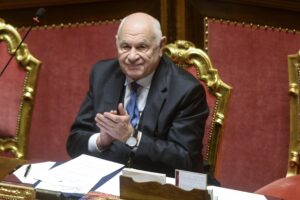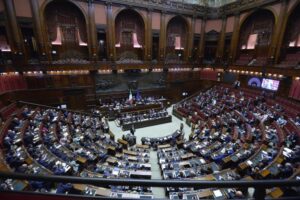La morte di Giorgio Napolitano, il Presidente con 5 premier in 9 anni: un’analisi.

Giorgio Napolitano, former President of Italy, passed away today at the age of 98. During one of the most challenging periods of the Second Republic, marked by political clashes, economic and financial crises, and fierce speculative attacks, Napolitano appointed five Prime Ministers.
In February 2007, Napolitano faced his first government crisis since taking office. Prime Minister Romano Prodi resigned after the Senate rejected his government’s foreign policy report. After three days, Napolitano sent the government back to the Chambers for a vote of confidence, which it won.
The following year, Napolitano had to deal with another crisis, this time involving the government led by the “Professor” (Prodi). The clash between the two sides intensified, and in January, the Senate, where the majority relied on a handful of votes due to the Porcellum electoral law, denied confidence to the government, leading Prodi to resign. The only option was to dissolve the Chambers and hold elections. Silvio Berlusconi took over, but quickly squandered the overwhelming majority he had received in the elections. However, it was the financial crisis from the United States that ultimately marked the end of Berlusconi’s time as Prime Minister.
The economic situation deteriorated progressively, and a previously unknown term to the public, “spread,” referring to the difference between Italian government bonds and German bunds, became the thermometer of economic stability. In the summer of 2011, the European Central Bank imposed strict measures on the Italian government to contain the crisis, and in the fall of 2011, the risk of downgrading loomed.
At the end of October, France and Germany issued an ultimatum to Berlusconi regarding debt and growth measures. A video of Angela Merkel and Nicolas Sarkozy from Brussels answering journalists’ questions after a meeting of the EU Council went viral. When asked if they had confidence in the Italian Prime Minister, Merkel, clearly embarrassed, timidly nodded yes, but then exchanged a meaningful glance with Sarkozy, and both smiled ironically.
The fate of the Berlusconi government was sealed. On November 9, Napolitano appointed Mario Monti a senator for life, marking the prelude to the technocratic government, which the center-right accused of being a conspiracy against Berlusconi.
On November 12, after a tense day, Berlusconi threw in the towel and sat in front of Napolitano at the Quirinale Palace while signing his resignation. The Monti government was born, with the parties stepping back and putting aside their conflicts. The “strange majority” and “Super Mario” took on the almost impossible mission of guiding Italy out of the crisis and restoring the country’s lost international credibility. However, it was not an easy task, as seen with the highly contested Fornero law on pensions.
Monti’s technocratic government also quickly dissolved. On December 6, 2012, the People of Freedom (PDL) party left the majority and abstained from voting on important bills in the Senate. After a meeting with Napolitano, Monti announced that he would resign once the Stability Law was approved.
On December 22, after consultations with political forces, Napolitano signed the decree to dissolve the Chambers, and elections were held on February 24 and 25, 2013. The center-left coalition, “Italy Common Good,” won the majority of seats in the Chamber of Deputies, but neither the center-left nor the center-right reached an absolute majority in the Senate.
The political scene was disrupted by the emergence of Beppe Grillo’s Five Star Movement, which received 25% of the votes. This was the “boom” that Napolitano had ironically dismissed after the results of the regional elections in Sicily. However, Grillo rejected the Democratic Party’s offer of collaboration. For Bersani, it was a half-hearted electoral victory that closed the doors to Palazzo Chigi.
Meanwhile, the political forces struggled to elect a new President. Romano Prodi fell victim to friendly fire from 101 snipers, and among the casualties was Bersani, who stepped down as leader of the Democratic Party. The pressure on the outgoing President intensified, and in the end, Napolitano accepted a second term “out of a sense of responsibility.”
Shortly after, in late April 2013, Bersani’s failure led to the formation of Enrico Letta’s government and the birth of a broad coalition. The President stated that “the forces represented in Parliament must, without exception, contribute to the decisions to be made for the country’s renewal. We cannot ignore the election results, whether we like them or not, and no party or coalition has enough votes to govern alone.”
The need for agreements between different forces was emphasized, with the condition that reforms be implemented; otherwise, the re-elected President would have to “draw the necessary consequences.” However, tensions arose when the President refused to appoint Nicola Gratteri as Minister of Justice.
Once again, in the name of reforms and economic recovery, Napolitano entrusted Matteo Renzi, the “demolition man,” with the task of forming a government. However, there were still tensions along the way.











